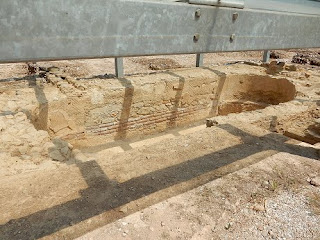Greek Folk Dance
The best time to visit Athens is in the spring (April, May, early June) or fall (mid-September, October); so of course we came in August. This is one of the hottest months, as well as the time of year that Athens has the most tourists. Was it hot – yes! Was it crowded – sort of. If you went to the tourist places, and who doesn’t, there were substantial numbers of people; if you hung out in museums or interesting places without air conditioning, it wasn’t too crowded. Our best idea was to go to the ruins early in the morning and save the museums for later in the day. In the evening the best place to be was in a café that overlooked the water with some sort of cold drink in your hand.
Although there is an old city in Athens, much of the modern Metroplex
 |
| Pomegranate growing near the Lykeion |
The Acropolis, or ‘high city’, was probably inhabited in the Neolithic period. It is an easily defensible site, sitting on a rocky point above the Cephisian Plain. Once you’re up on top, it is easy to see why people
 |
| Residential area near the Parthenon |
Solon’s constitution was supposed to deal with political and economic
 |
| Cistern built in Aristotle's school in 334 BC |
 |
| Monument to Melina Mercouri |
 |
| Aegean Sea |
Greek Folk Dance
No comments:
Post a Comment